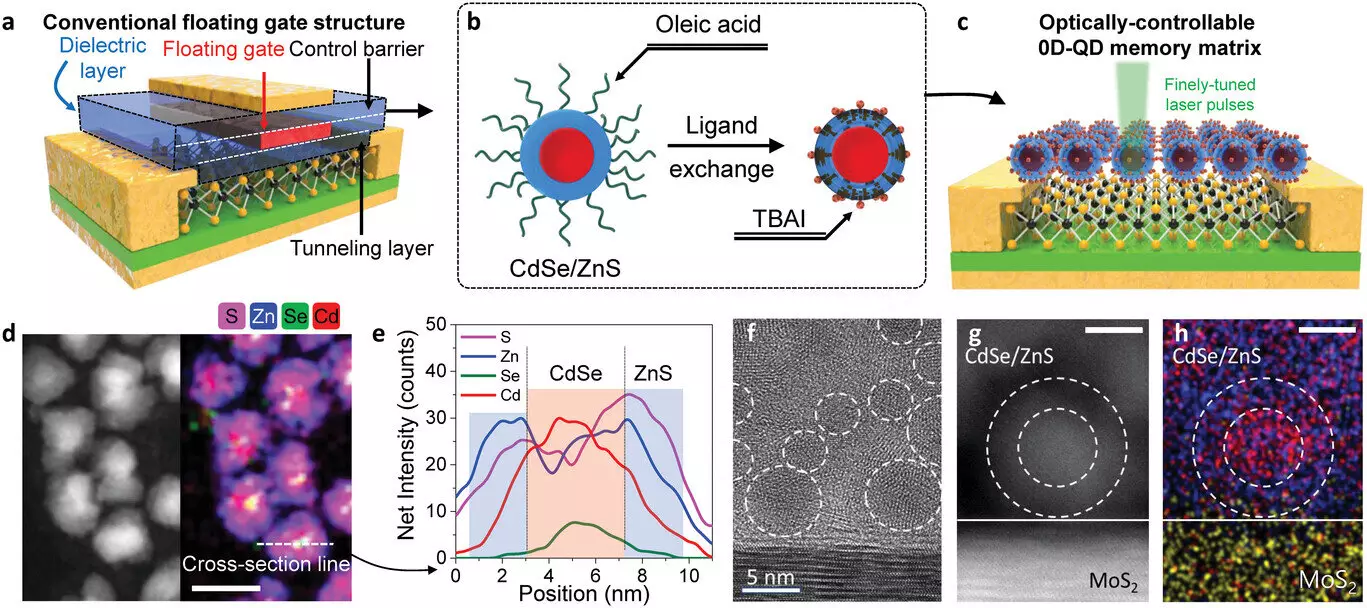We are currently living in an era where the amount of data being generated is growing exponentially. This data deluge has led to a surge in the number of data centers that are required to store and process this massive amount of information. However, the energy consumption of these data centers has become a cause for concern, as it has been identified as a major contributor to environmental pollution. To tackle this issue, researchers have been exploring polygonal computing systems that consume less power but deliver higher computation speed. Unfortunately, these systems are unable to meet the overwhelming demand for data processing as they still operate using electrical signals, similar to traditional binary computing systems. As a potential solution to this dilemma, Dr. Do Kyung Hwang from the Center for Opto-Electronic Materials & Devices of the Korea Institute of Science and Technology (KIST) and Professor Jong-Soo Lee from the Department of Energy Science & Engineering at Daegu Gyeongbuk Institute of Science and Technology (DGIST) have collaborated to develop a revolutionary material that enables a next-generation memory powered by light.
The Development of a New Semiconductor Artificial Junction Material
The joint research team has successfully fabricated a unique semiconductor artificial junction material, known as a zero-dimensional and two-dimensional (2D-0D) material. This material combines quantum dots within a core-shell structure, where zinc sulfide (ZnS) is layered on the surface of cadmium selenide (CdSe) and a molybdenum sulfide (MoS2) semiconductor. What sets this material apart is its capacity to store and manipulate electronic states within quantum dots that measure 10 nm or smaller.
When light is applied to the cadmium selenide core, a specific number of electrons flow out of the molybdenum sulfide semiconductor. This phenomenon leads to the trapping of holes in the core, consequently making it conductive. Moreover, the electron state within the cadmium selenide is quantized. By employing intermittent light pulses, the research team can sequentially trap electrons in the electron band, inducing a change in the resistance of the molybdenum sulfide through the field effect. Depending on the number of light pulses, the resistance undergoes cascading changes, allowing for the creation and maintenance of more than just two states. Unlike conventional memory, which only has 0 and 1 states, this new material can maintain multiple states between 0 and 10.
The researchers have also addressed the issue of charge leakage between neighboring quantum dots by incorporating a zinc sulfide shell. This shell prevents charge leakage, enabling each individual quantum dot to function as an independent memory unit. While conventional 2D-0D semiconductor artificial junction structures merely amplify signals from light sensors, the quantum dot structure developed by this team closely resembles the floating gate memory structure, showcasing its potential as a next-generation optical memory.
The Potential of Light-Powered Computing
To evaluate the effectiveness of the polynomial memory phenomenon, the researchers conducted neural network modeling using the CIFAR-10 dataset. The results were astonishing, with the model achieving an impressive 91% recognition rate. This breakthrough demonstrates the groundbreaking potential of light-powered computing in revolutionizing data processing.
The use of light as a medium for transmitting data between the computing and storage components of a multi-level computer system promises to significantly enhance processing speed. By replacing electrical signals with light, data can be transmitted at an unprecedented rate, ultimately reducing the power consumption of data centers. This means that we can achieve greater computational efficiency while minimizing the negative impact on the environment.
In addition to the practical benefits, light-powered computing also holds immense potential for advancements in artificial intelligence and machine learning. The field of quantum computing has been rapidly gaining traction, and this new development in light-powered computing could revolutionize the way we process and analyze data. With the ability to maintain multiple states between 0 and 10, the quantum dot structure allows for more complex calculations and data storage, which could lead to significant improvements in the accuracy and efficiency of machine learning algorithms.
The development of a zero-dimensional and two-dimensional semiconductor artificial junction material marks a significant milestone in the realm of light-powered computing. By harnessing the power of light, researchers are one step closer to revolutionizing data processing and storage. With its ability to maintain multiple states and its potential for use in artificial intelligence applications, this breakthrough has the potential to reshape the future of computing. As we continue to navigate the era of data deluge, the integration of light-powered systems may hold the key to unlocking new levels of efficiency and sustainability in computing.


Leave a Reply